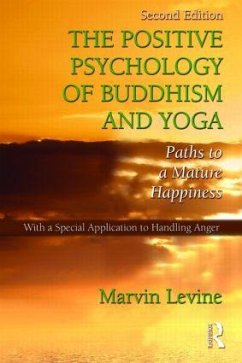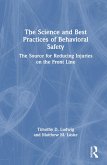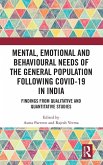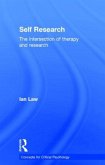- Gebundenes Buch
- Merkliste
- Auf die Merkliste
- Bewerten Bewerten
- Teilen
- Produkt teilen
- Produkterinnerung
- Produkterinnerung
First Published in 2010. Routledge is an imprint of Taylor & Francis, an informa company.
Andere Kunden interessierten sich auch für
![Child to Parent Aggression and Violence Child to Parent Aggression and Violence]() Hue San KuayChild to Parent Aggression and Violence160,99 €
Hue San KuayChild to Parent Aggression and Violence160,99 €![The Science and Best Practices of Behavioral Safety The Science and Best Practices of Behavioral Safety]() Timothy D LudwigThe Science and Best Practices of Behavioral Safety168,99 €
Timothy D LudwigThe Science and Best Practices of Behavioral Safety168,99 €![Mental, Emotional and Behavioural Needs of the General Population Following Covid-19 in India Mental, Emotional and Behavioural Needs of the General Population Following Covid-19 in India]() Mental, Emotional and Behavioural Needs of the General Population Following Covid-19 in India180,99 €
Mental, Emotional and Behavioural Needs of the General Population Following Covid-19 in India180,99 €![Intercultural Parenting Intercultural Parenting]() Koong Hean FooIntercultural Parenting160,99 €
Koong Hean FooIntercultural Parenting160,99 €![Self Research Self Research]() Ian LawSelf Research187,99 €
Ian LawSelf Research187,99 €![Rethinking Work Rethinking Work]() Rethinking Work160,99 €
Rethinking Work160,99 €![The Health Psychology Reader The Health Psychology Reader]() David F Marks (ed.)The Health Psychology Reader251,99 €
David F Marks (ed.)The Health Psychology Reader251,99 €-
-
-
First Published in 2010. Routledge is an imprint of Taylor & Francis, an informa company.
Hinweis: Dieser Artikel kann nur an eine deutsche Lieferadresse ausgeliefert werden.
Hinweis: Dieser Artikel kann nur an eine deutsche Lieferadresse ausgeliefert werden.
Produktdetails
- Produktdetails
- Verlag: Taylor & Francis
- 2nd edition
- Seitenzahl: 288
- Erscheinungstermin: 1. Juli 2009
- Englisch
- Abmessung: 231mm x 152mm x 20mm
- Gewicht: 499g
- ISBN-13: 9781848728509
- ISBN-10: 1848728506
- Artikelnr.: 27054259
- Herstellerkennzeichnung
- Libri GmbH
- Europaallee 1
- 36244 Bad Hersfeld
- gpsr@libri.de
- Verlag: Taylor & Francis
- 2nd edition
- Seitenzahl: 288
- Erscheinungstermin: 1. Juli 2009
- Englisch
- Abmessung: 231mm x 152mm x 20mm
- Gewicht: 499g
- ISBN-13: 9781848728509
- ISBN-10: 1848728506
- Artikelnr.: 27054259
- Herstellerkennzeichnung
- Libri GmbH
- Europaallee 1
- 36244 Bad Hersfeld
- gpsr@libri.de
Marvin Levine, a well-known researcher and theorist in cognitive-experimental psychology, received his M.A. at Harvard where he worked with B.F. Skinner and George Miller, and his Ph.D. with Harry Harlow at the University of Wisconsin. Since 1965 he has been a professor in the Department of Psychology at Stony Brook University. His earliest work was on intellectual problem solving, research that served to counter the then popular conditioning view of human behavior. He later turned his attention to interpersonal problem solving, giving workshops on assertiveness training and anger management, and for several years helped resolve disputes as a volunteer mediator. He is also a published poet and a professional musician. As is revealed in this volume, all these activities have contributed to his understanding of human nature. He also maintained a long-standing interest in Eastern philosophy. He gradually began to see similarities between the conceptions and methods of Buddhism and Yoga and those of Western psychotherapy. In this accessible book he discusses these three systems. The exotic and "mystical" trappings from Buddhism and Yoga are stripped away. The emphasis, instead, is on their aims and methods, and their relation to Western psychology. This approach provides a clear understanding of how to live a more useful, happier life. It is also an essential read for anyone interested in an enlarged framework for modern psychology.
Part 1. Buddhism. 1. King Ashoka's Question: What is Your Secret?: A tale
about the conversion of King Ashoka to Buddhism. 2. Maturity and Serenity:
The Buddhist approach to attaining these ideals. 3. The Story of
Siddhartha: The life of Prince Siddhartha and his transformation into the
Buddha. 4. The Hindu Context: The world in which the Buddha was raised; the
influential ideas. 5. The Core of the Buddha's Teachings: An overview of
the Four Noble Truths; a comparison to the modern scientific outlook. 6.
The Noble Truth of Dukkha (Suffering), Part 1: Suffering and Impermanence:
The meaning of suffering; impermanence and the potentiality for suffering.
7. The Noble Truth of Dukkha, Part 2: Caught in the Causal Matrix: Dukkha
as helplessness, as "caughtness" in a matrix of forces; a comparison to the
western concept of determinism. 8. The Noble Truth of Tanha (Craving):
Cravings as the cause of suffering; the meaning of cravings. 9. The Noble
Truth of Nirvana (Liberation), Part 1: Conquer the Beasts Within: The
cravings and their transformation; the western concept of reinforcement;
detachment from goals. 10. The Noble Truth of Nirvana, Part 2: The Nature
of Attachment: Attachment versus enjoyment; attachment versus devotion. 11.
The Buddha: the Compassionate One: Some implications of the view expressed
in the First Three Noble Truths, particularly the necessity for compassion;
a comparison to clinical psychology. 12. Supermaturity: The Buddhist ideals
of living; a comparison to Western ideals. 13. Anatman Reconsidered: You
Are Not Your Mind: The essential self (cf. Buddha-Nature); a comparison to
the Western (Behaviorist) view. 14. The Noble Truth of Magga (The Path),
Part 1: Wisdom and Ethics: The first five branches of the eight-fold path
15. The Noble Truth of Magga, Part 2: Mental Discipline: Right Effort and
Mindfulness; a variety of meditative practices 16. Buddhist Problem
Solving: Buddhist solutions to political and personal problems, contrasted
with traditional solutions Part 2. Yoga. 17. Yoga and Buddhism: Atman as
the distinguishing feature; various types of Yoga. 18. I Discover Hatha
Yoga: How I came to the practice of Hatha Yoga; breathing and postures;
benefits of the practice. 19. Savasana: The particular benefits of Savasana
(the Dead-Weight Pose); its relation to Transcendental Meditation and to
Benson's Relaxation Response. 20. The yogic state, Part 1: Immersion: The
"inner" practice of Hatha Yoga, of learning to maintain focused attention;
a comparison to Western approaches. 21. The yogic state, Part 2:
Transforming Judgment: Replacing pejorative and prideful judgments with a
more dispassionate assessment; Western attitudes toward judgment. 22. The
yogic state, Part 3: Life is Where You Find it: Generalizing the state
(calm, immersed, judgment-free) practiced in Hatha Yoga to all of living.
23. yogic Theory: The Unenlightened Mind: The components of the mind before
any enlightenment has occurred. 24. The Eight Angas, Part 1: The Practices:
The proper attitudes (Yamas and Niyamas) that are cultivated and practiced
25. The Eight Angas, Part 2: The Experiences: The deepening levels of
experience that go to make up the yogic state. 26. yogic Theory: The
Enlightenment Mind: The components of the fully enlightened mind. 27. yogic
Problem Solving: yogic solutions to political and personal problems,
contrasted with traditional solutions Part 3. Western Psychology. 28.
Buddhism, Yoga, and Western Psychology: A summary of the similarities
between East and West; Buddhism as empiricism. 29. Mindfulness and Right
Thoughts: Traditional psychotherapy seen as mindfulness training; the
treatment of "wrong thoughts" in Cognitive Therapy. 30. Problem Solving as
Compassionate Action: Replacing anger and fear with the problem-solving
stance. 31. Empathic Assertiveness as Right Speech: Principles of
criticizing with concern for the rights of others. 32. Psychological
Applications of Eastern Methods: Mindfulness training as a therapeutic
procedure; mutual Eastern and Western Influence Part IV: Handling Anger.
33. The Nature of Anger: A broad definition, ranging from irritation to
rage; the variables of intensity, duration, and threshold. 34. Anger:
Assumptions and Levels of Expression: The assumptions underlying the
present treatment; levels of self-transformation to which we can aspire.
35. A Schematic, Physiological Model: A sketch of changes in the nervous
system when provoked; the effects of breathing, relaxing, and cognitive
reinterpretation. 36. General Methods for Decreasing Anger: Techniques that
raise the threshold so that we're less likely to become angry. 37. Specific
Methods, Part I: Right Views of Others: Seeing others properly, especially
the forces at work; the sense in which provocations are not personal. 38.
Specific Methods, Part 2: Changing One's Own Attitudes: Seeing oneself
properly: Question beliefs, develop broad tolerances, learn what matters.
39. Specific Methods, Part 3: When Anger Occurs: The importance of waiting,
breathing, relaxing, and rehearsing; the role of cognitive techniques
Afterword References Additional Readings Author Index Subject Index
about the conversion of King Ashoka to Buddhism. 2. Maturity and Serenity:
The Buddhist approach to attaining these ideals. 3. The Story of
Siddhartha: The life of Prince Siddhartha and his transformation into the
Buddha. 4. The Hindu Context: The world in which the Buddha was raised; the
influential ideas. 5. The Core of the Buddha's Teachings: An overview of
the Four Noble Truths; a comparison to the modern scientific outlook. 6.
The Noble Truth of Dukkha (Suffering), Part 1: Suffering and Impermanence:
The meaning of suffering; impermanence and the potentiality for suffering.
7. The Noble Truth of Dukkha, Part 2: Caught in the Causal Matrix: Dukkha
as helplessness, as "caughtness" in a matrix of forces; a comparison to the
western concept of determinism. 8. The Noble Truth of Tanha (Craving):
Cravings as the cause of suffering; the meaning of cravings. 9. The Noble
Truth of Nirvana (Liberation), Part 1: Conquer the Beasts Within: The
cravings and their transformation; the western concept of reinforcement;
detachment from goals. 10. The Noble Truth of Nirvana, Part 2: The Nature
of Attachment: Attachment versus enjoyment; attachment versus devotion. 11.
The Buddha: the Compassionate One: Some implications of the view expressed
in the First Three Noble Truths, particularly the necessity for compassion;
a comparison to clinical psychology. 12. Supermaturity: The Buddhist ideals
of living; a comparison to Western ideals. 13. Anatman Reconsidered: You
Are Not Your Mind: The essential self (cf. Buddha-Nature); a comparison to
the Western (Behaviorist) view. 14. The Noble Truth of Magga (The Path),
Part 1: Wisdom and Ethics: The first five branches of the eight-fold path
15. The Noble Truth of Magga, Part 2: Mental Discipline: Right Effort and
Mindfulness; a variety of meditative practices 16. Buddhist Problem
Solving: Buddhist solutions to political and personal problems, contrasted
with traditional solutions Part 2. Yoga. 17. Yoga and Buddhism: Atman as
the distinguishing feature; various types of Yoga. 18. I Discover Hatha
Yoga: How I came to the practice of Hatha Yoga; breathing and postures;
benefits of the practice. 19. Savasana: The particular benefits of Savasana
(the Dead-Weight Pose); its relation to Transcendental Meditation and to
Benson's Relaxation Response. 20. The yogic state, Part 1: Immersion: The
"inner" practice of Hatha Yoga, of learning to maintain focused attention;
a comparison to Western approaches. 21. The yogic state, Part 2:
Transforming Judgment: Replacing pejorative and prideful judgments with a
more dispassionate assessment; Western attitudes toward judgment. 22. The
yogic state, Part 3: Life is Where You Find it: Generalizing the state
(calm, immersed, judgment-free) practiced in Hatha Yoga to all of living.
23. yogic Theory: The Unenlightened Mind: The components of the mind before
any enlightenment has occurred. 24. The Eight Angas, Part 1: The Practices:
The proper attitudes (Yamas and Niyamas) that are cultivated and practiced
25. The Eight Angas, Part 2: The Experiences: The deepening levels of
experience that go to make up the yogic state. 26. yogic Theory: The
Enlightenment Mind: The components of the fully enlightened mind. 27. yogic
Problem Solving: yogic solutions to political and personal problems,
contrasted with traditional solutions Part 3. Western Psychology. 28.
Buddhism, Yoga, and Western Psychology: A summary of the similarities
between East and West; Buddhism as empiricism. 29. Mindfulness and Right
Thoughts: Traditional psychotherapy seen as mindfulness training; the
treatment of "wrong thoughts" in Cognitive Therapy. 30. Problem Solving as
Compassionate Action: Replacing anger and fear with the problem-solving
stance. 31. Empathic Assertiveness as Right Speech: Principles of
criticizing with concern for the rights of others. 32. Psychological
Applications of Eastern Methods: Mindfulness training as a therapeutic
procedure; mutual Eastern and Western Influence Part IV: Handling Anger.
33. The Nature of Anger: A broad definition, ranging from irritation to
rage; the variables of intensity, duration, and threshold. 34. Anger:
Assumptions and Levels of Expression: The assumptions underlying the
present treatment; levels of self-transformation to which we can aspire.
35. A Schematic, Physiological Model: A sketch of changes in the nervous
system when provoked; the effects of breathing, relaxing, and cognitive
reinterpretation. 36. General Methods for Decreasing Anger: Techniques that
raise the threshold so that we're less likely to become angry. 37. Specific
Methods, Part I: Right Views of Others: Seeing others properly, especially
the forces at work; the sense in which provocations are not personal. 38.
Specific Methods, Part 2: Changing One's Own Attitudes: Seeing oneself
properly: Question beliefs, develop broad tolerances, learn what matters.
39. Specific Methods, Part 3: When Anger Occurs: The importance of waiting,
breathing, relaxing, and rehearsing; the role of cognitive techniques
Afterword References Additional Readings Author Index Subject Index
Part 1. Buddhism. 1. King Ashoka's Question: What is Your Secret?: A tale
about the conversion of King Ashoka to Buddhism. 2. Maturity and Serenity:
The Buddhist approach to attaining these ideals. 3. The Story of
Siddhartha: The life of Prince Siddhartha and his transformation into the
Buddha. 4. The Hindu Context: The world in which the Buddha was raised; the
influential ideas. 5. The Core of the Buddha's Teachings: An overview of
the Four Noble Truths; a comparison to the modern scientific outlook. 6.
The Noble Truth of Dukkha (Suffering), Part 1: Suffering and Impermanence:
The meaning of suffering; impermanence and the potentiality for suffering.
7. The Noble Truth of Dukkha, Part 2: Caught in the Causal Matrix: Dukkha
as helplessness, as "caughtness" in a matrix of forces; a comparison to the
western concept of determinism. 8. The Noble Truth of Tanha (Craving):
Cravings as the cause of suffering; the meaning of cravings. 9. The Noble
Truth of Nirvana (Liberation), Part 1: Conquer the Beasts Within: The
cravings and their transformation; the western concept of reinforcement;
detachment from goals. 10. The Noble Truth of Nirvana, Part 2: The Nature
of Attachment: Attachment versus enjoyment; attachment versus devotion. 11.
The Buddha: the Compassionate One: Some implications of the view expressed
in the First Three Noble Truths, particularly the necessity for compassion;
a comparison to clinical psychology. 12. Supermaturity: The Buddhist ideals
of living; a comparison to Western ideals. 13. Anatman Reconsidered: You
Are Not Your Mind: The essential self (cf. Buddha-Nature); a comparison to
the Western (Behaviorist) view. 14. The Noble Truth of Magga (The Path),
Part 1: Wisdom and Ethics: The first five branches of the eight-fold path
15. The Noble Truth of Magga, Part 2: Mental Discipline: Right Effort and
Mindfulness; a variety of meditative practices 16. Buddhist Problem
Solving: Buddhist solutions to political and personal problems, contrasted
with traditional solutions Part 2. Yoga. 17. Yoga and Buddhism: Atman as
the distinguishing feature; various types of Yoga. 18. I Discover Hatha
Yoga: How I came to the practice of Hatha Yoga; breathing and postures;
benefits of the practice. 19. Savasana: The particular benefits of Savasana
(the Dead-Weight Pose); its relation to Transcendental Meditation and to
Benson's Relaxation Response. 20. The yogic state, Part 1: Immersion: The
"inner" practice of Hatha Yoga, of learning to maintain focused attention;
a comparison to Western approaches. 21. The yogic state, Part 2:
Transforming Judgment: Replacing pejorative and prideful judgments with a
more dispassionate assessment; Western attitudes toward judgment. 22. The
yogic state, Part 3: Life is Where You Find it: Generalizing the state
(calm, immersed, judgment-free) practiced in Hatha Yoga to all of living.
23. yogic Theory: The Unenlightened Mind: The components of the mind before
any enlightenment has occurred. 24. The Eight Angas, Part 1: The Practices:
The proper attitudes (Yamas and Niyamas) that are cultivated and practiced
25. The Eight Angas, Part 2: The Experiences: The deepening levels of
experience that go to make up the yogic state. 26. yogic Theory: The
Enlightenment Mind: The components of the fully enlightened mind. 27. yogic
Problem Solving: yogic solutions to political and personal problems,
contrasted with traditional solutions Part 3. Western Psychology. 28.
Buddhism, Yoga, and Western Psychology: A summary of the similarities
between East and West; Buddhism as empiricism. 29. Mindfulness and Right
Thoughts: Traditional psychotherapy seen as mindfulness training; the
treatment of "wrong thoughts" in Cognitive Therapy. 30. Problem Solving as
Compassionate Action: Replacing anger and fear with the problem-solving
stance. 31. Empathic Assertiveness as Right Speech: Principles of
criticizing with concern for the rights of others. 32. Psychological
Applications of Eastern Methods: Mindfulness training as a therapeutic
procedure; mutual Eastern and Western Influence Part IV: Handling Anger.
33. The Nature of Anger: A broad definition, ranging from irritation to
rage; the variables of intensity, duration, and threshold. 34. Anger:
Assumptions and Levels of Expression: The assumptions underlying the
present treatment; levels of self-transformation to which we can aspire.
35. A Schematic, Physiological Model: A sketch of changes in the nervous
system when provoked; the effects of breathing, relaxing, and cognitive
reinterpretation. 36. General Methods for Decreasing Anger: Techniques that
raise the threshold so that we're less likely to become angry. 37. Specific
Methods, Part I: Right Views of Others: Seeing others properly, especially
the forces at work; the sense in which provocations are not personal. 38.
Specific Methods, Part 2: Changing One's Own Attitudes: Seeing oneself
properly: Question beliefs, develop broad tolerances, learn what matters.
39. Specific Methods, Part 3: When Anger Occurs: The importance of waiting,
breathing, relaxing, and rehearsing; the role of cognitive techniques
Afterword References Additional Readings Author Index Subject Index
about the conversion of King Ashoka to Buddhism. 2. Maturity and Serenity:
The Buddhist approach to attaining these ideals. 3. The Story of
Siddhartha: The life of Prince Siddhartha and his transformation into the
Buddha. 4. The Hindu Context: The world in which the Buddha was raised; the
influential ideas. 5. The Core of the Buddha's Teachings: An overview of
the Four Noble Truths; a comparison to the modern scientific outlook. 6.
The Noble Truth of Dukkha (Suffering), Part 1: Suffering and Impermanence:
The meaning of suffering; impermanence and the potentiality for suffering.
7. The Noble Truth of Dukkha, Part 2: Caught in the Causal Matrix: Dukkha
as helplessness, as "caughtness" in a matrix of forces; a comparison to the
western concept of determinism. 8. The Noble Truth of Tanha (Craving):
Cravings as the cause of suffering; the meaning of cravings. 9. The Noble
Truth of Nirvana (Liberation), Part 1: Conquer the Beasts Within: The
cravings and their transformation; the western concept of reinforcement;
detachment from goals. 10. The Noble Truth of Nirvana, Part 2: The Nature
of Attachment: Attachment versus enjoyment; attachment versus devotion. 11.
The Buddha: the Compassionate One: Some implications of the view expressed
in the First Three Noble Truths, particularly the necessity for compassion;
a comparison to clinical psychology. 12. Supermaturity: The Buddhist ideals
of living; a comparison to Western ideals. 13. Anatman Reconsidered: You
Are Not Your Mind: The essential self (cf. Buddha-Nature); a comparison to
the Western (Behaviorist) view. 14. The Noble Truth of Magga (The Path),
Part 1: Wisdom and Ethics: The first five branches of the eight-fold path
15. The Noble Truth of Magga, Part 2: Mental Discipline: Right Effort and
Mindfulness; a variety of meditative practices 16. Buddhist Problem
Solving: Buddhist solutions to political and personal problems, contrasted
with traditional solutions Part 2. Yoga. 17. Yoga and Buddhism: Atman as
the distinguishing feature; various types of Yoga. 18. I Discover Hatha
Yoga: How I came to the practice of Hatha Yoga; breathing and postures;
benefits of the practice. 19. Savasana: The particular benefits of Savasana
(the Dead-Weight Pose); its relation to Transcendental Meditation and to
Benson's Relaxation Response. 20. The yogic state, Part 1: Immersion: The
"inner" practice of Hatha Yoga, of learning to maintain focused attention;
a comparison to Western approaches. 21. The yogic state, Part 2:
Transforming Judgment: Replacing pejorative and prideful judgments with a
more dispassionate assessment; Western attitudes toward judgment. 22. The
yogic state, Part 3: Life is Where You Find it: Generalizing the state
(calm, immersed, judgment-free) practiced in Hatha Yoga to all of living.
23. yogic Theory: The Unenlightened Mind: The components of the mind before
any enlightenment has occurred. 24. The Eight Angas, Part 1: The Practices:
The proper attitudes (Yamas and Niyamas) that are cultivated and practiced
25. The Eight Angas, Part 2: The Experiences: The deepening levels of
experience that go to make up the yogic state. 26. yogic Theory: The
Enlightenment Mind: The components of the fully enlightened mind. 27. yogic
Problem Solving: yogic solutions to political and personal problems,
contrasted with traditional solutions Part 3. Western Psychology. 28.
Buddhism, Yoga, and Western Psychology: A summary of the similarities
between East and West; Buddhism as empiricism. 29. Mindfulness and Right
Thoughts: Traditional psychotherapy seen as mindfulness training; the
treatment of "wrong thoughts" in Cognitive Therapy. 30. Problem Solving as
Compassionate Action: Replacing anger and fear with the problem-solving
stance. 31. Empathic Assertiveness as Right Speech: Principles of
criticizing with concern for the rights of others. 32. Psychological
Applications of Eastern Methods: Mindfulness training as a therapeutic
procedure; mutual Eastern and Western Influence Part IV: Handling Anger.
33. The Nature of Anger: A broad definition, ranging from irritation to
rage; the variables of intensity, duration, and threshold. 34. Anger:
Assumptions and Levels of Expression: The assumptions underlying the
present treatment; levels of self-transformation to which we can aspire.
35. A Schematic, Physiological Model: A sketch of changes in the nervous
system when provoked; the effects of breathing, relaxing, and cognitive
reinterpretation. 36. General Methods for Decreasing Anger: Techniques that
raise the threshold so that we're less likely to become angry. 37. Specific
Methods, Part I: Right Views of Others: Seeing others properly, especially
the forces at work; the sense in which provocations are not personal. 38.
Specific Methods, Part 2: Changing One's Own Attitudes: Seeing oneself
properly: Question beliefs, develop broad tolerances, learn what matters.
39. Specific Methods, Part 3: When Anger Occurs: The importance of waiting,
breathing, relaxing, and rehearsing; the role of cognitive techniques
Afterword References Additional Readings Author Index Subject Index








